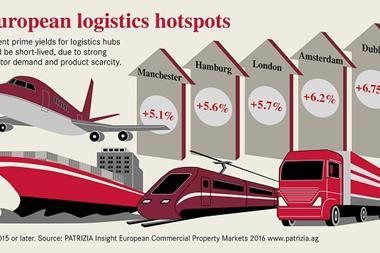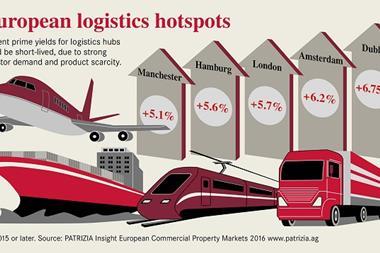With more than a third of the UK’s workforce not eligible for a mortgage, the future lies in build to rent.

SPONSORED CONTENT FROM PATRIZIA
Generation Rent. PRS. Build to Rent. These are all phrases and terms that have entered the popular vocabulary of both property professionals and increasingly everyday first-time buyers.
We know that it is harder than ever to get on the housing ladder given average salaries and the average house price. In the last 10 years, the UK has experienced a 59% increase in households renting and a 48% reduction in mortgage approvals. However, what we don’t often consider is the reason.
Why is it that we now talk about ‘Generation Rent’ and how has this come to be? More pertinently, what is the solution for those in need of a home and what does this mean for those looking to invest in the residential sector?
How we live & work
To understand ‘Generation Rent’ you need to understand several key changes in the way that mortgages are decided, the role of government legislation and how we now live and work.
First, more of us are in employment than ever before, and since 2006 the number of people in full time employment has increased by 5.53% to 19.8m. However, this appears less significant when you think about the fact that over the same period part time employment has increased by 9.06% to 7m, full time self-employment has increase by 15.81% to 3.4m, and part time self-employment has increased by a massive 55.37% to 1.4m.
This means that 60% of all new jobs created since 2006 are either part time or fall under self-employment, and that 37.2% of the UK workforce are now employed in this way.
Increasing latent demand from renters coming into the PRS market is a trend which is hard to see slowing down anytime soon
If you think about this in tandem with 2014 legislation from the Prudential Regulation Authority (PRA) that banned self-certification mortgages, tightened interest-only rules and introduced stricter affordability rules, it becomes clear that this 37.2%, representing over 11m working people, do not satisfy the traditional criteria of a full time ‘9 to 5’ job.
Crucially, these people do not satisfy the criteria for securing a mortgage by their own means, meaning entrance to the housing market might be precluded by those who have the option of parental help.
What is more, this discrepancy between who can buy and who cannot will now be further exacerbated by the termination of the Help to Buy Equity scheme which facilitated over 100,000 mortgages to first time buyers since its introduction in 2013.
The combination of the above translates into an increasing latent demand from renters coming into the PRS market, a trend which is hard to see slowing down anytime soon.
Rental supply
How about rental supply? Those who might have traditionally been Buy to Let investors would likely now be disinclined to enter this market thanks to a raft of new legislation that has been introduced over the past few years.
This includes the introduction of an additional 3% stamp duty for second homes, the abolition of mortgage interest tax relief and the ‘wear and tear’ allowance, the abolition of CGT exemption for non-doms, the introduction of annual tax on enveloped dwelling, and not forgetting the new and stricter BTL mortgage lending rules.
This has led to a significant slowdown in activity both from national and international BTL investors, and could potentially even lead to disinvestment from this sector. All of this means that there is dwindling demand to purchase a home as individuals simply can’t or won’t buy, whilst having a knock on effect for the traditional housebuilder model primarily in large density brownfield sites.
Ultimately, this reduces development activity in the sales market by putting further pressure on the supply side for housing. However, we all need a roof over our head, and this has gone hand in hand with a huge demand in the Private Rental Sector (PRS).
Naturally, there has been a significant increase in renters as would-be buyers are excluded from access to the housing ladder and private BTL landlords no longer see value for money.

While a housebuilder may not be able to pre-sell its units for development, causing delays for the customer and risks to the investor, an institutional Build to Rent (BTR) developer does not need to find a buyer.
This means that BTR can deliver a supply of housing not only faster than a housebuilder, but also one which can be accessed by 37.2% of the part- time and self-employed UK work force, as well as the remaining 62.8% who are increasingly choosing the flexible lifestyle that renting offers.
If ‘Generation Rent’ is the problem, then PRS is the answer, and the smart money is on BTR.
Antonio Marin-Bataller, investment executive at PATRIZIA Immobilien AG
About PATRIZIA Immobilien AG
PATRIZIA Immobilien AG has been active as an investment manager on the real estate market in 15 European countries for more than 30 years. PATRIZIA’s range includes the acquisition, management, value increase and sale of residential and commercial real estate over own licensed investment platforms. As one of the leading real estate investment companies in Europe PATRIZIA operates as a respected business partner of large institutional investors and retail investors in all major European countries. Currently, the Company manages real estate assets worth around EUR 17 billion, primarily as a co-investor and portfolio manager for insurance companies, pension fund institutions, sovereign funds, savings and cooperative banks.





























1 Readers' comment